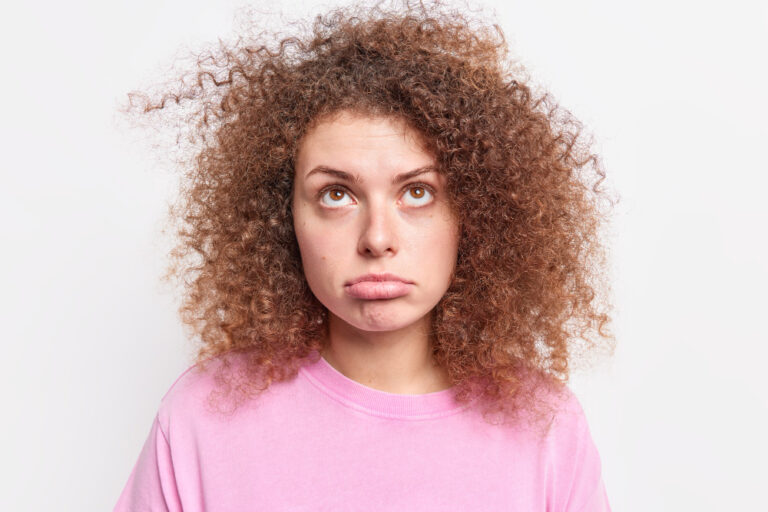Greasy hair is something my partner suffers from.
And I’ve been helping him with it.
I get how annoying it.
You wash it, and somehow, just a few hours later, it looks oily and flat again.
No volume, no freshness—just limp, lifeless hair that refuses to cooperate.
It feels like no matter what you do, your scalp produces oil at lightning speed, making you want to wash it daily just to keep up.
There are a lot of reasons why your hair might be greasy.
That’s what we’re here to discover.
Once you figure out what’s triggering the oil overload, you can actually fix it.
If you’re constantly dealing with greasy roots and dull, weighed-down strands, one or more of these might be the culprit.
Please note that this post includes affiliate links. If you click on a link and make a purchase, I will make a commission at no extra cost to you.
1. You’re Washing Your Hair Too Often
I know it sounds crazy, but washing your hair too much can actually make it oilier.
When you shampoo daily, you strip away your scalp’s natural oils.
In response, your scalp freaks out and starts producing even more oil to make up for it.
So, what happens is you’re stuck in a cycle of greasy roots and constant washing.
Try washing your hair every other day instead of daily.
Get your hair slowly used to the limited washing.
If your hair gets greasy quickly, use a dry shampoo in between washes to absorb excess oil.
Your scalp might need a week or two to adjust, but over time, it will learn to produce less oil.
2. You’re Using the Wrong Shampoo
Not all shampoos are made for oily hair.
If yours is too heavy, contains lots of silicones, or is ultra-hydrating, it could be making things worse by coating your hair and weighing it down.
On the other hand, if your shampoo is too harsh, it might be stripping your scalp, causing it to overcompensate with more oil.
The idea is to be gentle with your hair.
Look for a clarifying or balancing shampoo designed for oily hair. This has worked for my partner.
Ingredients like tea tree oil, charcoal, apple cider vinegar, and salicylic acid can help break down buildup and regulate oil production.
Avoid creamy, moisturizing shampoos that are too rich for oily hair.
3. You’re Overloading on Conditioner
Conditioner is important, but too much of it can leave your hair looking greasy, fast.
Heavy conditioners and leave-in treatments can weigh down your hair strands, making them look flat and oily even when they’re clean.
So, what you need to do is apply conditioner only to the ends of your hair, not the roots.
A dime-sized amount is usually enough—don’t overdo it.
If your hair still feels heavy, try using a lightweight, silicone-free conditioner.
4. You’re Touching Your Hair Too Much
This one might surprise you, but your hands carry a lot of oil and dirt.
If you’re constantly running your fingers through your hair, playing with it, or pushing it behind your ears, you’re transferring all that oil onto your scalp.
As hard it is, try to keep your hands off your hair as much as possible.
If you have bangs or layers that make you touch your hair often, use bobby pins or clips to keep them out of your face.
5. Your Hairbrush is Making It Worse
Brushing your hair is supposed to make it look nice, right?
Well, if your brush is dirty or full of product buildup, it could be spreading oil from your roots down to your ends.
The more you brush, the greasier your hair will become.
Clean your hairbrush regularly.
Remove any trapped hair and wash the bristles with shampoo once a week.
Also, avoid brushing your scalp too much. Use a wide-tooth comb to detangle instead of brushing from root to tip.
6. Your Diet is Affecting Your Scalp
What you eat affects your skin, and that includes your scalp.
If your diet is high in processed foods, sugar, or greasy foods, your scalp might be producing excess oil.
On the flip side, not drinking enough water can make your scalp overproduce oil to compensate for dryness.
So, think about your diet for a bit.
If you’re really eating healthy, skip this point.
You should focus on eating more whole foods like leafy greens, nuts, and lean proteins.
Foods rich in omega-3s, like salmon and chia seeds, help balance oil production. Also, drink plenty of water to keep your scalp hydrated from the inside out.
7. Your Pillowcase is Absorbing and Transferring Oil
Think about it—you sleep on your pillow every night.
If you’re not changing your pillowcase often, oil from your scalp and skin is building up and transferring back onto your hair, making it greasy even after washing.
Because we have 2 dogs, we change our pillow cases every 3-4 days.
Change your pillowcase at least twice a week.
If you want to take it up a notch, switch to a silk or satin pillowcase like this one—they absorb less oil than cotton and help your hair stay fresh longer.
Greasy hair doesn’t have to be an everyday struggle.
With a few small changes, you can break the cycle and start seeing fresher, healthier hair that actually stays clean.
Which of these tips are you going to try first?


